NEAR Protocol Review 2024: Updates You Don't Want to Miss!
NEAR Protocol is a blockchain platform that aims to simplify the user experience and make blockchain technology more accessible. It envisions a future where interacting with blockchain is as intuitive as using a laptop keyboard. Just as pressing a key on a keyboard relies on the operating system to interpret and deliver the desired outcome, NEAR Protocol simplifies blockchain technology by acting as the seamless interface between users and the blockchain network.
Chain abstraction is a key aspect of NEAR Protocol's vision. It involves simplifying the complex workings of blockchain technology into more understandable layers, making it accessible to developers, users, and stakeholders. These layers include the protocol layer, network layer, data layer, and smart contract layer. By abstracting these layers, blockchain technology becomes more user-friendly and fosters mainstream adoption.
NEAR Protocol's mainnet was launched in October 2020 and is designed with scalability in mind. It utilizes a sharded proof-of-stake blockchain, with the blockchain divided into four shards. The implementation of dynamic resharding further enhances scalability.
To achieve chain abstraction, NEAR Protocol is working on several projects and initiatives. These include sharding, the deployment of Simple Nightshade, dynamic resharding, improved account models, and the development of the NEAR blockchain operating system. NEAR is also making strides in the field of artificial intelligence (AI) and exploring the intersection of AI and blockchain technology.
NEAR Protocol's ultimate goal is to enable users to interact with decentralized applications (DApps) and digital assets without the complexity and technical intricacies usually associated with blockchain technology. The company aims to achieve this by abstracting away the complexities, improving scalability, and fostering a user-friendly ecosystem.
Despite the challenges of technical complexity, integration difficulty, user education, security concerns, and competition, NEAR Protocol is gaining momentum and attracting interest from developers and users. The protocol is focused on advancing chain abstraction, enhancing usability, scalability, and decentralization, and driving the adoption of blockchain technology in various industries, including decentralized finance (DeFi).
NEAR Protocol is a blockchain platform that aims to simplify the user experience and make blockchain technology more accessible. It envisions a future where interacting with blockchain is as intuitive as using a laptop keyboard. Just as pressing a key on a keyboard relies on the operating system to interpret and deliver the desired outcome, NEAR Protocol simplifies blockchain technology by acting as the seamless interface between users and the blockchain network.
Chain abstraction is a key aspect of NEAR Protocol's vision. It involves simplifying the complex workings of blockchain technology into more understandable layers, making it accessible to developers, users, and stakeholders. These layers include the protocol layer, network layer, data layer, and smart contract layer. By abstracting these layers, blockchain technology becomes more user-friendly and fosters mainstream adoption.
NEAR Protocol's mainnet was launched in October 2020 and is designed with scalability in mind. It utilizes a sharded proof-of-stake blockchain, with the blockchain divided into four shards. The implementation of dynamic resharding further enhances scalability.
To achieve chain abstraction, NEAR Protocol is working on several projects and initiatives. These include sharding, the deployment of Simple Nightshade, dynamic resharding, improved account models, and the development of the NEAR blockchain operating system. NEAR is also making strides in the field of artificial intelligence (AI) and exploring the intersection of AI and blockchain technology.
NEAR Protocol's ultimate goal is to enable users to interact with decentralized applications (DApps) and digital assets without the complexity and technical intricacies usually associated with blockchain technology. The company aims to achieve this by abstracting away the complexities, improving scalability, and fostering a user-friendly ecosystem.
Despite the challenges of technical complexity, integration difficulty, user education, security concerns, and competition, NEAR Protocol is gaining momentum and attracting interest from developers and users. The protocol is focused on advancing chain abstraction, enhancing usability, scalability, and decentralization, and driving the adoption of blockchain technology in various industries, including decentralized finance (DeFi).
When a key is pressed on a keyboard, it transmits a distinct scan code as binary data to the computer's CPU. The operating system interprets this data into a character, creates an event, and sends it to the active application, such as Microsoft Word. Word converts the character into an image based on font settings and sends it back to the CPU. The CPU subsequently transfers the image data to the GPU, which renders it on the monitor.
Just as we've grown accustomed to using laptops without delving into the intricacies of their inner workings, NEAR Protocol envisions a future where interacting with blockchain technology is just as intuitive and effortless. Imagine typing on your laptop keyboard, sending commands and messages seamlessly, without ever worrying about the underlying processes.
In our example, NEAR Protocol acts as the seamless interface between users and the blockchain network, much like the operating system of a laptop. Just as pressing a key on your laptop keyboard relies on the operating system to interpret and deliver the desired outcome, NEAR endeavours to simplify blockchain technology.
The ultimate goal is to remove blockchain's complexities, allowing users to interact with decentralized applications (DApps) and digital assets without jumping through extra hoops
This NEAR Protocol review will discuss the project's chain abstraction aspirations, the steps it has taken to get here and what the future holds for the company. We'll also delve into the company's AI strides and how it's positioning itself to be at the forefront of decentralized finance.
What is Chain Abstraction?
Blockchain abstraction simplifies the intricate workings of blockchain technology into more understandable layers, making it accessible to developers, users, and stakeholders without requiring deep technical knowledge. These layers include:
- Protocol Layer: The foundational level where the blockchain protocol operates, encompassing consensus mechanisms, data structures and cryptographic algorithms for securing transactions and blocks.
- Network Layer: Abstracts the peer-to-peer network infrastructure facilitating communication between nodes, handling tasks such as node discovery, message propagation, and network security.
- Data Layer: Focuses on the stored blockchain data, including transactions, blocks, and smart contracts. Abstraction here involves understanding data structure, validation, and storage mechanisms.
- Smart Contract Layer: Abstracts the programming logic and execution environment for smart contracts, enabling developers to deploy and interact with them without needing detailed implementation knowledge.
- Application Layer: The highest level of abstraction, where end-user applications and interfaces interact with the blockchain. This includes wallets, decentralized applications (DApps), and other user-facing software leveraging blockchain technology for various purposes.
By abstracting these layers, blockchain technology becomes more user-friendly and accessible, fostering mainstream adoption and facilitating the development of intuitive blockchain applications. This abstraction allows developers to focus on innovation and users to engage with blockchain technology seamlessly, without grappling with complex technical intricacies.
To learn more about chain abstraction and why it is crucial to the future of crypto, feel free to give our chain abstraction deep-dive article a read.
What is the NEAR Protocol?
NEAR Protocol, founded in 2017 by software developers Alexander Skidanov and Illia Polosukhin, originally began as an AI project. The project was built by NEAR Inc., a U.S.-based software company, and its ongoing development is overseen by the NEAR Foundation, a nonprofit headquartered in Switzerland.
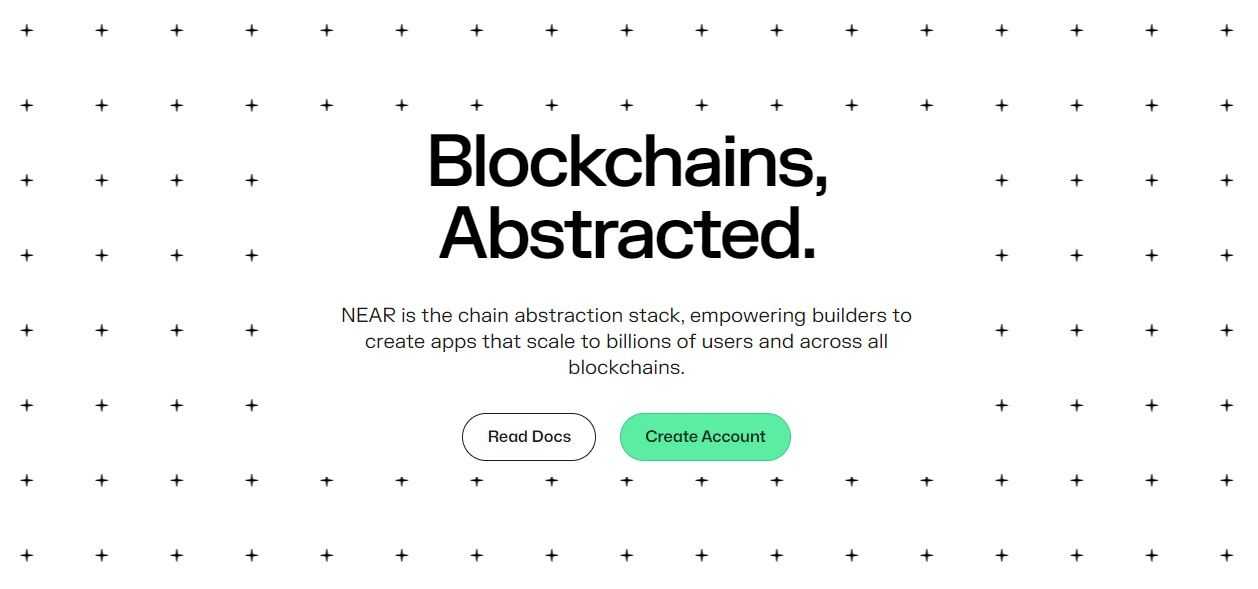
Over the years, NEAR Protocol has seen significant financial backing, raising approximately $1.1 billion over 15 rounds, according to Crunchbase.
NEAR Protocol's mainnet was launched in October 2020, marking a significant milestone in its development journey. Utilizing a sharded proof of stake blockchain, NEAR Protocol is designed with scalability in mind. For those unfamiliar, sharding involves splitting a blockchain into different pieces so that transactions can be processed in parallel. Its blockchain is divided into four shards, each capable of processing 1,000 transactions per second.
The implementation of dynamic resharding further enhances scalability, allowing for the creation and destruction of shards based on demand. However, this scalability comes with a trade-off in centralization, as the protocol's sharded blockchain is currently secured by just 215 validators.
Becoming a validator on the NEAR network requires 26,000 NEAR tokens, or over $200,000 at current prices. Nonetheless, delegation is an option for those without the minimum stake, albeit with careful consideration due to the risk of slashing. In addition to staking, NEAR tokens are used to pay transaction fees, with the majority being burned unless the transaction involves a smart contract. This fee distribution mechanism incentivizes developers to build on NEAR Protocol, driving ecosystem growth.
Real-world adoption of NEAR Protocol has been facilitated by platforms like Kai Ching and Sweat Economy (Sweatcoin), which simplify the use of crypto for everyday users. NEAR's success in abstracting away complexities has been pivotal in attracting users and developers alike.
NEAR Protocol Architecture
NEAR Protocol's architecture consists of two main layers: the blockchain layer and the runtime layer. These layers are designed to be independent of each other, allowing for flexibility and scalability.
- Blockchain Layer: This layer handles the core functions of the blockchain, such as managing transactions and maintaining the overall network. It cannot create or process transactions directly but instead passes them to the runtime layer for execution. The blockchain layer also manages accounts through a trie structure and oversees validators who ensure the integrity of the network.
- Runtime Layer: The runtime layer executes transactions and processes receipts generated by the blockchain layer. It operates based on rules defined by smart contracts and is responsible for managing accounts and executing transactions based on the information provided. The runtime layer encapsulates concepts like tokens, gas, fees, and rewards, handling them internally without direct involvement from the blockchain layer.
Here are a few other housekeeping items you should be aware of:
- Transactions and Receipts: Transactions represent actions requested by users, while receipts are internal messages used for processing these transactions within the network.
- Account-Based System: Similar to Ethereum, NEAR Protocol operates on an account-based system, where each user is associated with one or more accounts. The runtime layer applies rules to these accounts based on transaction information.
- Sharding: Accounts on NEAR Protocol are assigned to specific shards, each containing relevant account information. This helps distribute workload and maintain network efficiency.
- Trie: NEAR Protocol utilizes a trie structure to store the state associated with each account. Both the blockchain and runtime layers are aware of this structure and interact with it accordingly.
- Tokens and Gas: Token management, including fees, rewards, and gas, is handled within the runtime layer. The blockchain layer computes token-related aspects such as exchange rates and inflation.
- Validators: Validators play a crucial role in maintaining network integrity and are rewarded accordingly. While both layers are aware of validators, the runtime layer focuses on managing rewards, while the blockchain layer orchestrates validator operations.
NEAR's Vision For Chain Abstraction
NEAR has declared 2024 “the year of chain abstraction.”
The decentralized world of blockchains often feels like a disjointed puzzle, hindering the seamless integration and cooperation vital for Web3's growth. However, chain abstraction should swiftly dismantle these obstacles, making room for a future where navigating through various blockchain platforms feels as effortless as flipping through pages of a well-translated book.
Just like a master translator, it enables smooth communication and interaction across different chains, paving the way for a harmonious and prosperous Web3 ecosystem.
NEAR envisions a world where navigating the Web3 landscape feels as seamless as strolling through a well-organized city. It has also showcased a live demo of $SWEAT paying for a BNB transaction, highlighting chain abstraction's future.
In this vision, it is like the architect, designing magic bridges that effortlessly connect different blockchains. Chain abstraction will simplify the user experience by removing the need to worry about which blockchain they're on or how to navigate between networks.
Imagine users carrying a single wallet that works across all blockchain streets, much like a universal pass granting access to various members-only establishments. With chain abstraction, users can interact with different blockchain-based services within the same app interface, without ever leaving the comfort of their digital neighbourhood.
Behind the scenes, NEAR has been laying the groundwork for this future.
How NEAR is Enabling Chain Abstraction
In a round-up of milestones it achieved in 2023 and what was in store for 2024, the protocol highlighted steps it had taken to achieve chain abstraction, which we'll explore now.
Sharding
In September 2021, NEAR launched phase 0 of its roadmap towards a fully sharded blockchain, dubbed Simple Nightshade. This marked the beginning of a year-long process to enhance NEAR's speed, security, and capacity for Web3 users.
Originally designed for sharding, NEAR opted for a stable network launch in 2020. However, with rising demand and daily transactions reaching 300,000, NEAR decided to transition to sharding to accommodate increasing usage. A cautious approach was taken to roll out sharding across four stages, ensuring seamless integration without compromising key functionality.

Simple Nightshade
Phase 0 of NEAR's Simple Nightshade deployment successfully went live on the mainnet. This marked the start of a years-long transformation for the blockchain, promising enhanced speed, security, and scalability to accommodate millions of Web3 users.
In this initial phase, state sharding was introduced, splitting the state into four shards to significantly boost network throughput. While blockchains would traditionally face congestion as popularity grew, NEAR's live upgrade mechanism allowed for dynamic resharding, laying the groundwork for future scalability.
For users, this translated to the same user-friendly experience with improved speed and performance. Unlike other non-sharded networks, NEAR's Nightshade Sharding enabled linear scalability, ensuring it could handle increased transaction demand as user numbers soared.
Developers also benefited from this upgrade without altering their existing processes. Nightshade's homogeneous design shielded developers from the complexities of sharding, maintaining consistency in their development experience across shards.
While transactions per second (TPS) is commonly used as a metric for network speed, NEAR's performance went beyond TPS to include factors like network congestion, transaction finality, and cost. With Simple Nightshade, token transfers could achieve 800-1,000 TPS per shard, and with the introduction of four shards, a minimum of 2,500 to 3,000 TPS is anticipated, with the potential for theoretically limitless scalability to handle millions of transactions per second.
Phase 2: Nightshade
This phase would mark the completion of challenges implementation, eliminating the necessity for validators to track all shards. With this step accomplished, both state and processing would become fully sharded. Additionally, it would lower the hardware requirements for running a block producer on NEAR, enhancing accessibility for validators.
NEAR estimated that it would deliver phase 2 in 2023. That didn't happen, however. The team launched testing for phase 2 in the week of Jan. 29 with plans for a mainnet launch in May. This phase introduces stateless validation expanding the original Nightshade design, enabling the avoidance of fraud proofs.
As part of this transition, the state of each shard is moved entirely into memory, enhancing the performance of each shard — currently 4, soon to be 5 — by more than 10 times. The subsequent step of adding zkWASM on top will compress execution proofs, facilitating even greater decentralization of validators.
💡Zero-knowledge proving to WebAssembly (zkWASM), which NEAR is working on with Polygon, allows Layer-1 validators to streamline their verification process. With this technology, validators can efficiently prove the accuracy of claims without needing to verify individual shards. This enhances the security and scalability of NEAR's blockchain network by allowing validators to validate transactions and smart contracts across multiple shards more effectively.
Phase 3: Dynamic Resharding
This phase aims to unlock NEAR's potential for infinite scalability.
Following the completion of phase 2, where NEAR would achieve a fully functional sharded mainnet with a fixed number of shards, phase 3 would introduce the ability for the network to dynamically split and merge shards based on resource utilization.
This enhancement would make NEAR significantly more scalable and resilient to short-term usage spikes.
Account Model
Elsewhere in the crypto world, your account is a bunch of mumbo jumbo. Not NEAR though! Here's an overview of NEAR's account model.
Human-Readable Accounts
NEAR utilizes human-readable accounts to simplify account identification. This means that accounts are assigned addresses like alice.near, making them easier to remember, rather than long strings of random characters.
There are two types of accounts:
- Named Accounts: These accounts have human-readable names like we discussed above.
- Implicit Accounts: Similar to traditional Bitcoin or Ethereum accounts, implicit accounts are identified by a 64-character address, which corresponds to a unique ED25519 key-pair.
Named accounts have the ability to create sub-accounts, which can help in organizing related accounts. However, there are some rules regarding the creation of these accounts:
- Only the registrar account can create short top-level accounts (less than 32 characters).
- Anyone can create long top-level accounts (32 characters or more).
- An account can only create immediate sub-accounts of itself.
Permissions Through Access Keys
In blockchain, using an account means using a private key to sign transactions. However, NEAR accounts have a unique feature called Access Keys, which are like sets of keys that have their own permissions. Access Keys are similar to OAuths, which let you give limited access to your account to third parties.
There are two types of Access Keys:
- Full Access Keys: These keys have total control over your account, like an administrator on your computer. They can do everything from creating new accounts to transferring NEAR tokens.
- Function Call Keys: These keys can only call specific methods in a smart contract, without the ability to transfer tokens. They're useful for letting apps interact with your account in a limited way.
Here are some of the benefits associated with Access Keys:
- Safe App Usage: With Access Keys, you can safely use web3 apps without worrying about giving full access to your account. You can create a key that only allows specific actions in an app's smart contract.
- Replacing Keys: If you think your keys might be stolen, you can easily remove or replace them, just like changing a password on a website.
- Key Recovery: You can set up a key-recovery system where someone you trust can help you recover your account if you lose access.
If you remove all keys from an account, it becomes locked. This means that only the account's smart contract can perform actions like transferring tokens or creating sub-accounts. Locking an account is helpful when you want to ensure that only a specific smart contract has control over it.
Simple to Develop Smart Contracts
Developers can write smart contracts on NEAR using either JavaScript or Rust. Once written, the NEAR SDK helps compile the contract into WebAssembly, which allows it to be deployed and executed on the NEAR platform.
Smart contracts on NEAR have a few tricks up their sleeve:
- Easy to Build: NEAR provides a user-friendly JavaScript SDK and extensive documentation, making contract development straightforward.
- Easy to Maintain: Contract code is separated from its storage, allowing for updates to be made without hassle.
- Some Methods Are Free: Public methods that only perform read operations can be called for free, reducing costs for users.
Mutable State (Storage)
Each account in NEAR has a state where it stores its information and all the data related to contracts.
Account's State:
- Anyone in the network can read an account's state, but only the account itself can change it.
- Accounts pay for their storage by locking a portion of their balance based on how much space they're using.
- The state includes metadata like the account's balance, contract code hash, and storage usage.
Contract's State:
- The state also holds the code and storage for each contract.
- Contract storage is organized as key-value pairs, encoded using base64 and JSON serialization.
Paying for Storage:
- Accounts pay for storage by locking a portion of their balance.
- Adding data decreases the account's balance while deleting data increases it.
- Storing approximately 100kb of data costs around 1 NEAR token.
Blockchain Operating System (BOS)
In March 2023, NEAR billed itself as the “blockchain operating system,” creating near.org for browsing and discovering open web experiences, and compatible with any blockchain.
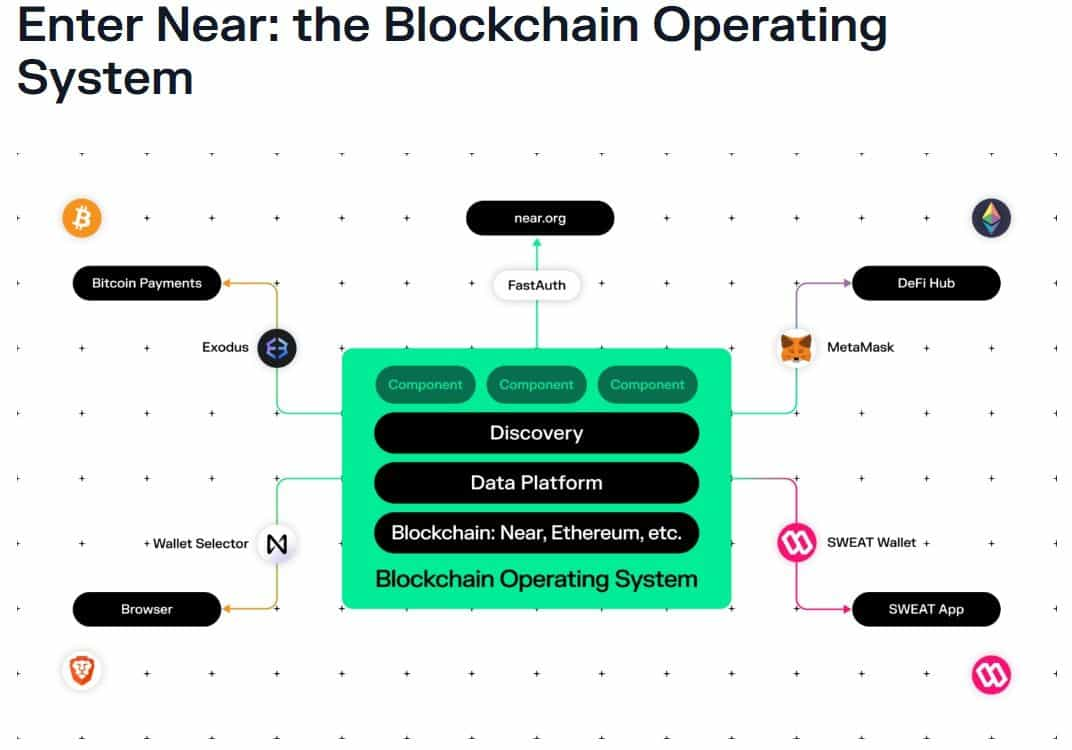
The Blockchain Operating System monicker, NEAR said at the time, would turn it into the main entry point for the open web, benefiting both users and developers. It would make accessing and navigating both Web3 and Web2 easier.
Developers could use near.org to create and code interfaces more efficiently. They could customize their frontends, compatible with any blockchain, using a collection of components. NEAR said this streamlined the onboarding process and removed obstacles for both developers and users.
FastAuth
FastAuth is a user-friendly onboarding solution that makes it super easy for people to create accounts on any website or app connected to the Blockchain Operating System. It's designed to provide a familiar experience similar to what we're used to on the regular web (Web2), so you don't need to worry about dealing with complex crypto stuff.
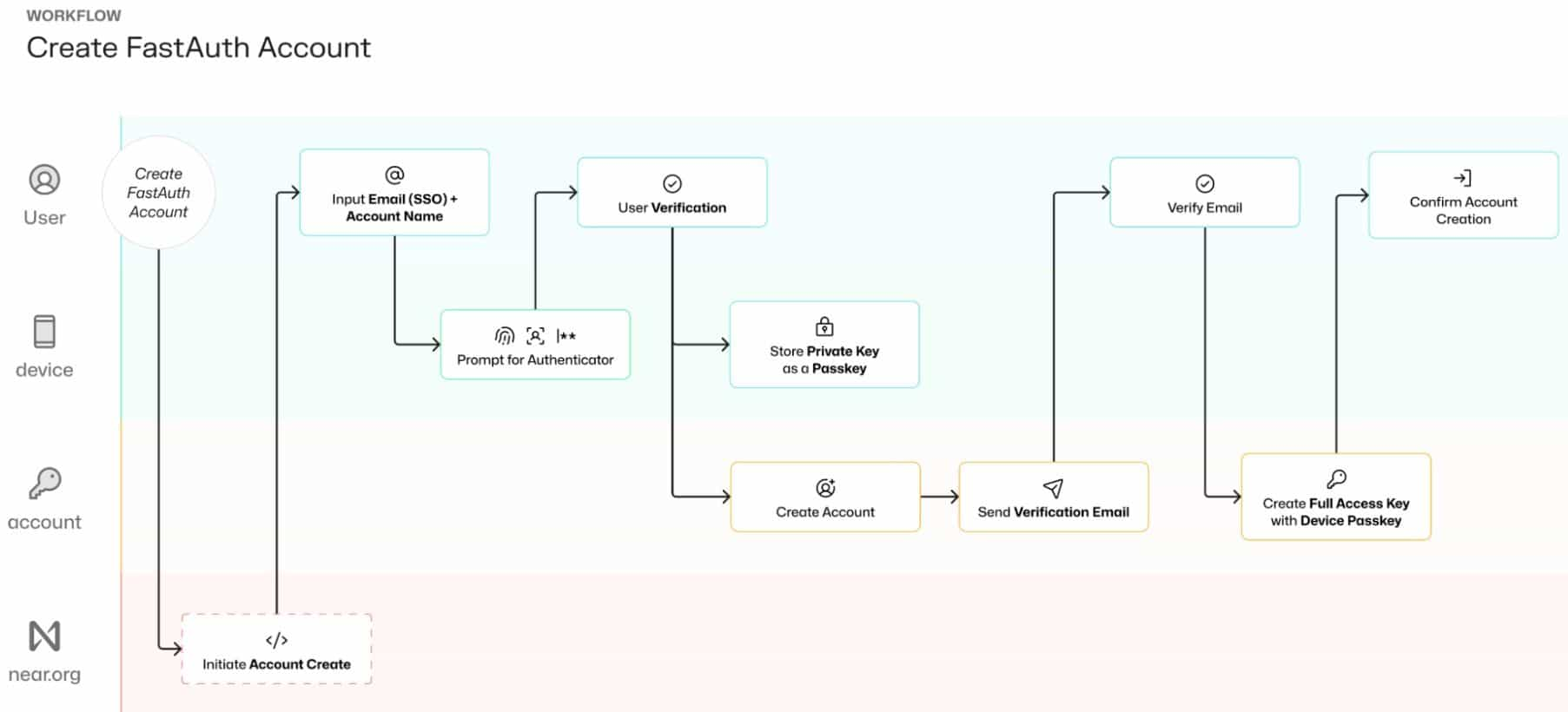
Here's what FastAuth does:
- Fast Registration: You can sign up using things like your fingerprint, face recognition, or your usual email address. Then, you'll automatically get a username based on your email.
- Easy Login and Passkeys: You can log in easily using your biometrics from any device that supports it, without needing to remember passwords. Plus, you can use Passkeys from Apple or Google for extra convenience.
- Single Sign-On Account Recovery: If you ever need to recover your account, you can do it by signing in with your registered email. And the best part is, the recovery process is decentralized, meaning no one person has full control over your account.
- Meta Transactions and Zero Balance Accounts: With these features, you can create an account without needing to pay anything upfront.
- Relayers: These are like sponsors for new users, covering their initial interactions on certain platforms for free.
So, what makes FastAuth so great?
- It helps developers attract more users to their app or website by making the onboarding process smooth and accessible.
- It's an easy way for enterprises to integrate blockchain technology into their business, opening up new possibilities for community and commerce.
- For users, it makes getting started with Web3 apps simple and hassle-free. You can set up a secure account in seconds without dealing with complicated passwords or usernames.
Here's what's in the pipeline for FastAuth:
- Extending relayers and FastAuth to more platforms beyond near.org
- Further decentralization for account recovery
- Compatibility with multiple blockchains
- Adding two-factor authentication for extra security
Account Aggregation
Instead of needing separate accounts and dealing with complicated infrastructure, account aggregation allows users to manage everything from a single account. This means no more manual bridging, no more keeping track of multiple addresses on different networks, and no more hassle with gas tokens or switching between wallets.
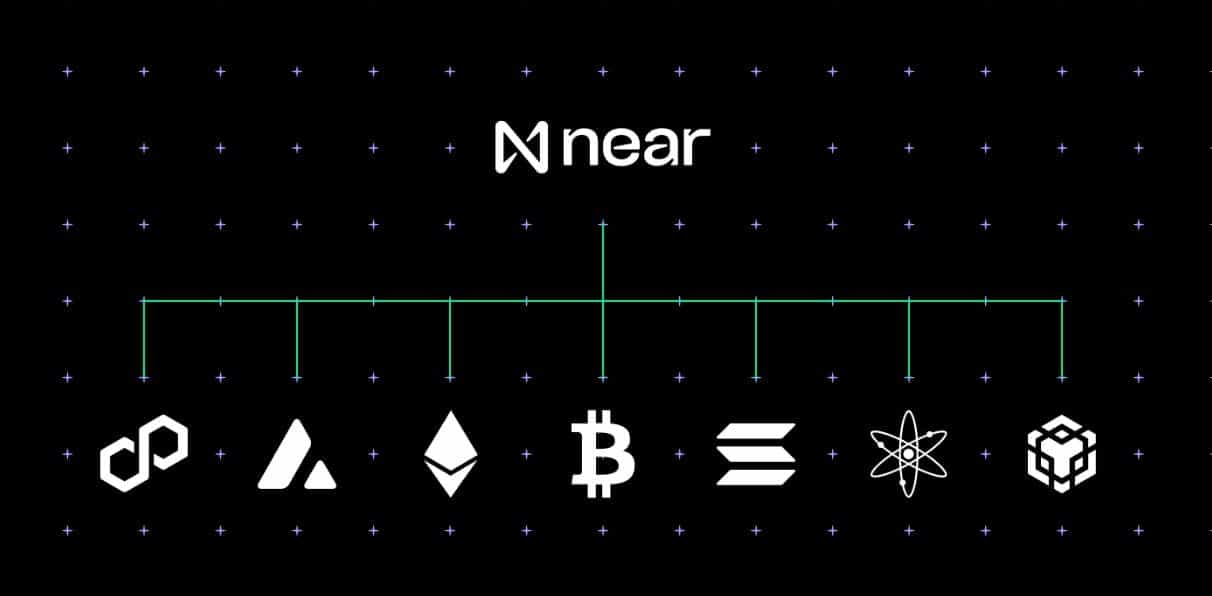
Account aggregation consists of three technologies:
NEAR Account
Unlike traditional blockchain accounts that use complex strings of numbers and letters, NEAR accounts are easy-to-read names, making them simpler and safer to use.
As noted, FastAuth is an easy way to create accounts without needing passwords. Instead, it uses biometrics like fingerprints or FaceID, linked to your device. Plus, if you ever lose access to your account, you can easily recover it using your email.
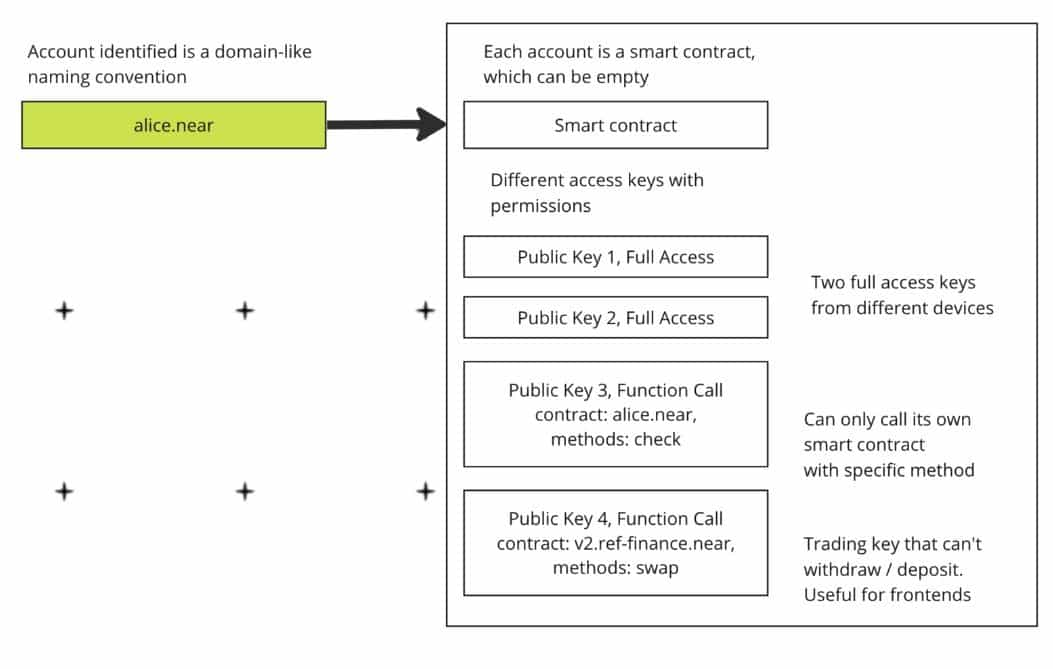
Now, NEAR is gearing up to expand its account system to work seamlessly across different blockchains, making it even easier for users to manage their accounts without juggling passwords and recovery methods across multiple chains. This means a smoother experience for anyone using Web3 apps.
Chain Signatures
Chain signatures on NEAR allow you to use your NEAR account to sign transactions and messages on other blockchains, without needing different private keys or wallets for each one. This is done through a process called multi-party computation (MPC), where a group of independent nodes collaboratively sign messages without any single node having access to the full private key.
The unique thing about NEAR's approach is that it makes this process programmable. By integrating MPC signer nodes into the NEAR network, smart contracts can initiate signature procedures for specific accounts, giving them the ability to interact with any blockchain. This means that NEAR accounts become incredibly flexible, able to work seamlessly across different chains in the Web3 ecosystem.
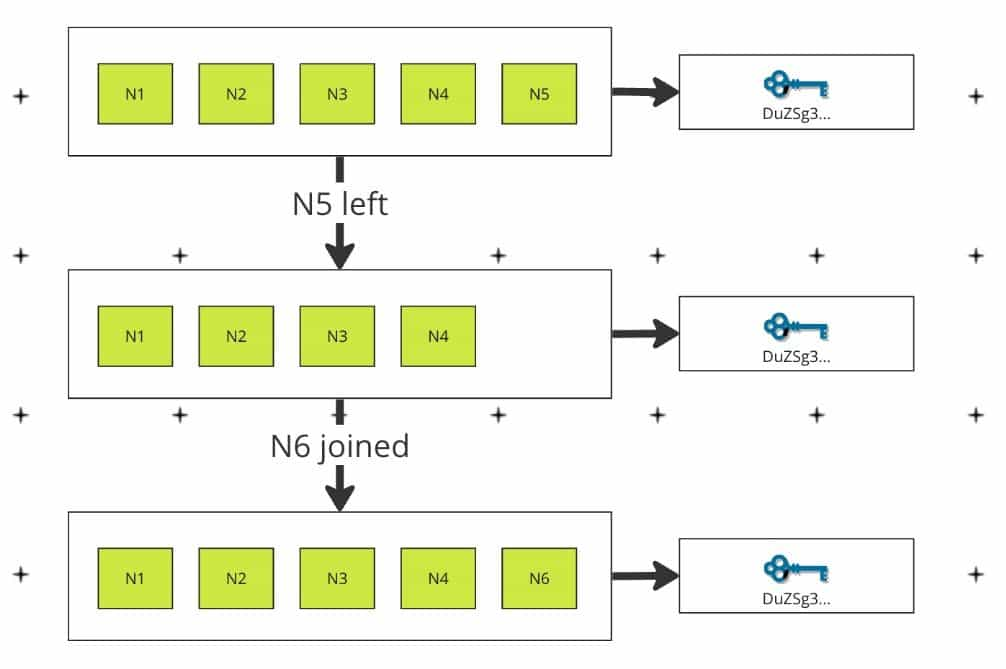
Initially, this MPC signer network will consist of a subset of NEAR validators and partners, but eventually, it will expand to include all NEAR validators, enhancing the security of the entire system over time.
Intent Relayers
Intent relayers simplify the process of transacting value across different blockchains by allowing users to express what they want to do without needing to understand the technical details of how it's done. Instead of users having to deal with multiple transactions on different chains and managing token swaps, intent relayers handle these complexities behind the scenes.
Here's how it works: Users can specify their desired action, such as buying an NFT, using their NEAR account and paying in $NEAR. The relayer smart contract then takes care of the rest. It forwards the transaction to the NEAR MPC signature contract, which signs the transaction and sends it to the Ethereum network. The relayer then handles the necessary fund transfers and executes the final transaction to complete the user's request.
This approach simplifies cross-chain transactions for users and opens up opportunities for developers to offer various payment options, such as using application tokens or offering subscription models.
NEAR Data Availability (NEAR DA)
NEAR DA provides reliable and cost-efficient data availability for Ethereum rollups and developers working on the Ethereum network.
With NEAR DA, developers can access reliable data at a fraction of the cost compared to Ethereum's native data availability solutions. Ethereum's native data availability solutions. For example, storing 100kB of data on NEAR costs only $0.0033, whereas on Ethereum, it can cost as much as $26.22. This makes NEAR DA 8,000 times cheaper!
Editors' Note: Prices are current as of Nov. 8, 2023, when the initiative was announced.
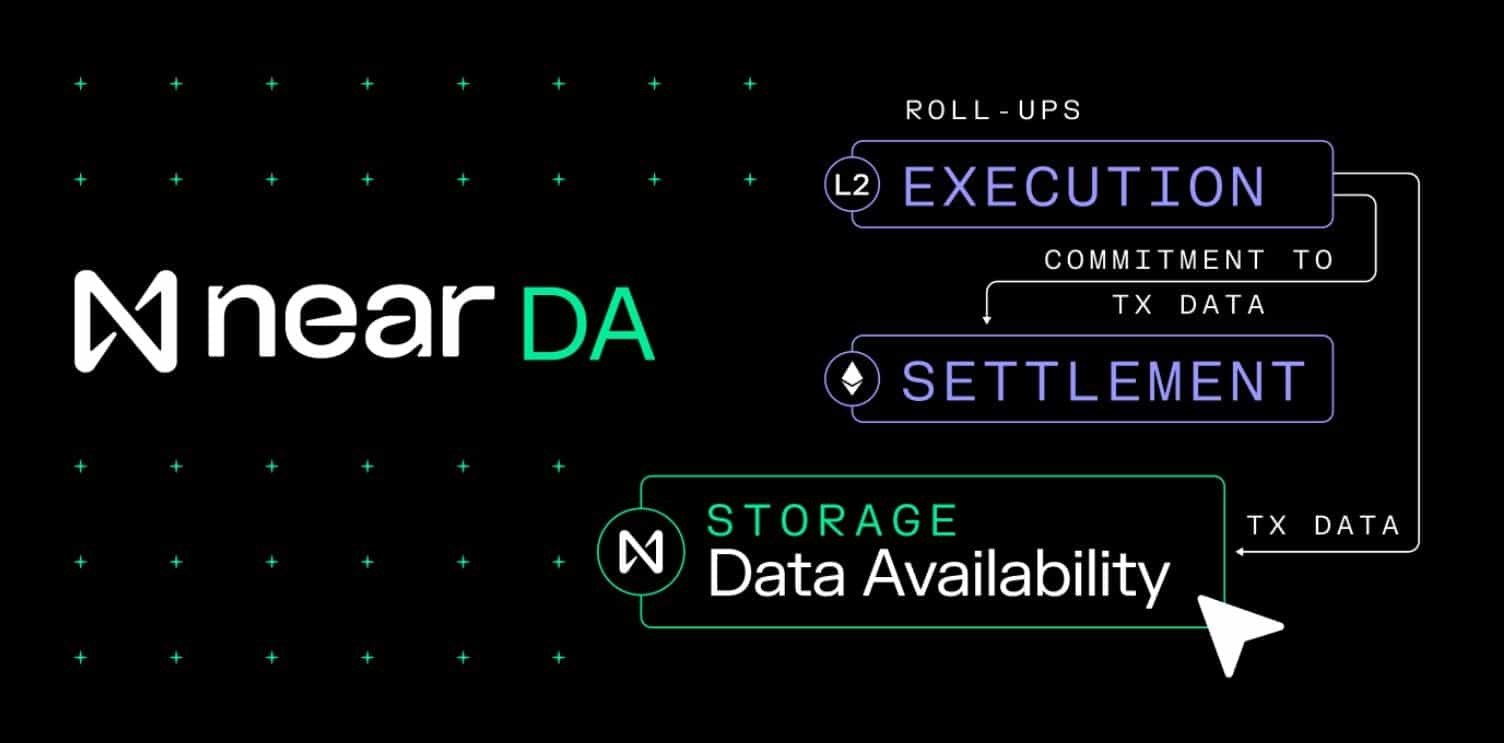
NEAR DA offers significant benefits for developers, including reduced costs and improved reliability for their projects. It allows them to maintain the security of Ethereum while benefiting from lower expenses and enhanced performance.
Illia Polosukhin, co-founder of NEAR Protocol and CEO of NEAR Foundation, emphasized the importance of NEAR DA in advancing mainstream adoption of the open web. By offering NEAR DA, NEAR Protocol is expanding its open web stack to provide a modular blockchain development framework. This enables developers to build on Ethereum while leveraging NEAR's advanced technology for specific aspects of their projects.
Central to NEAR's vision of chain abstraction is the role of data availability and NEAR DA. Zero-knowledge technology facilitates security unification across chains through state proofs, enhancing the accessibility of settlement data from various networks. As DApps evolve into truly multichain entities with account aggregation and decentralized frontends, accessing data from multiple chains becomes more efficient, particularly when data is consolidated within NEAR.
This consolidation on NEAR also offers cost advantages for rollups, making the platform a favourable choice for multichain DApp development.
Challenges to Chain Abstraction
At ETHDenver in March, NEAR Foundation COO Chris Donovan highlighted the challenges the company was facing in promoting chain abstraction and gaining interest from developers and users.
- Technical Complexity: Chain abstraction involves complex technical concepts such as unified security layers, identity layers, and experience layers. Communicating these concepts in a simple and understandable manner can be challenging, especially for those who are not deeply familiar with blockchain technology.
- Integration Difficulty: Implementing chain abstraction requires integrating with various blockchain ecosystems and protocols. Developers may face challenges in integrating their applications with the chain abstraction infrastructure, especially if they are already committed to existing technologies or platforms.
- User Education: Users need to understand the benefits of chain abstraction and how it simplifies their interactions with multiple blockchains. Educating users about the advantages of chain abstraction and how to use it effectively is essential for widespread adoption.
- Security Concerns: Any new technology that abstracts away complexity must address security concerns thoroughly. Users and developers need assurance that their assets and transactions will remain secure when using chain abstraction solutions.
- Competition and Fragmentation: While chain abstraction aims to reduce fragmentation in the blockchain ecosystem, there may still be competition among different projects and protocols offering similar solutions. Coordinating efforts and fostering collaboration among stakeholders is crucial to overcoming fragmentation.
Despite these challenges, there is growing interest and momentum behind chain abstraction, with various projects and initiatives exploring its potential. Overcoming these obstacles will require continued collaboration, innovation, and community engagement within the blockchain space.
NEAR's Artificial Intelligence Strides
Chain abstraction isn't the only thing getting love!
In recent years, the fields of artificial intelligence (AI) and blockchain technology have been converging, presenting new opportunities and challenges. Many people may not know this, but before co-founding NEAR, Illia spent 10 years as an AI researcher at Google — an experience that will come in handy as NEAR pushes into AI.
Drawing from his upbringing in Ukraine amid economic turmoil, Illia stresses the need for digital self-sovereignty in today's technology-driven world. He warns against the potential misuse of emerging technologies, particularly AI, by centralized powers for control and manipulation. Advocating for decentralized systems, he envisions a future where individuals have ownership and agency over their data, assets, and governance.
He proposes concrete steps, including integrating blockchain and peer-to-peer networks, to realize this vision. Illia advocates for user-owned AI and community-governed AI models to ensure transparency, accountability, and alignment with collective interests. By leveraging technology and collaborative efforts, he believes we can reshape societal structures and empower individuals globally.
At ETHDenver, Illia and Erik Voorhees discussed AI, decentralization, and the intersection with blockchain.
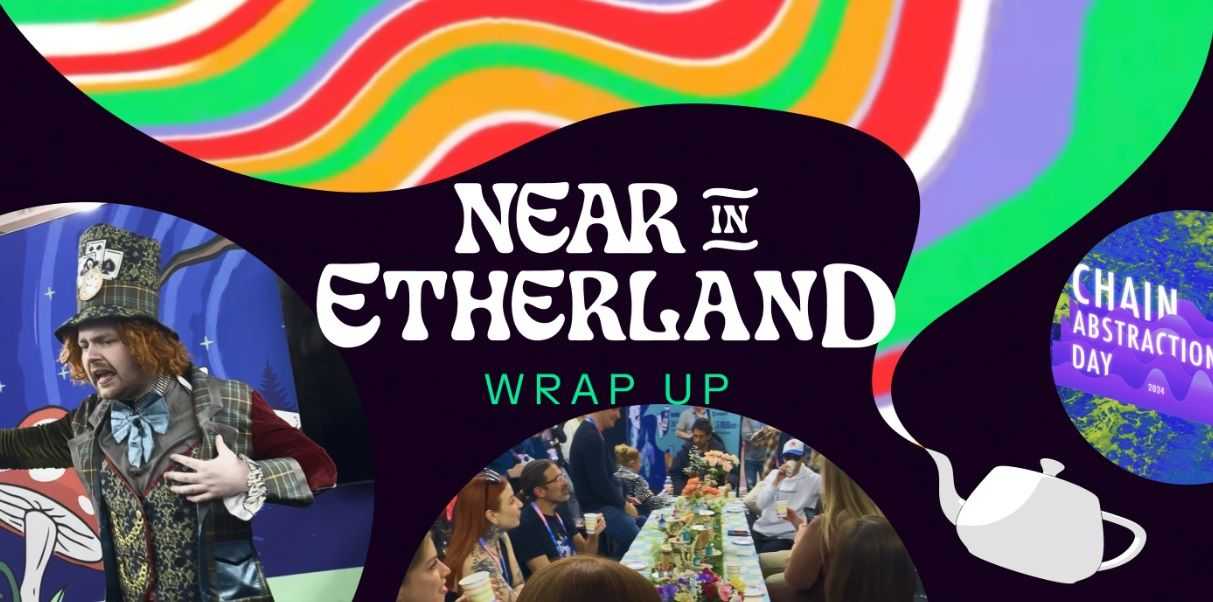
Challenges in AI Regulation
Erik, with a background in various crypto projects, emphasizes the importance of decentralization in AI systems. He believes that centralized control over AI technologies poses risks to individual freedom and privacy. Instead, he advocates for permissionless systems, where intelligence can operate without the constraints of centralized authority.
Erik highlights the dangers of government regulation in AI, particularly regarding open-source models. He mentioned a White House executive order that stipulates regulations on AI models, restricting certain types of mathematics and potentially classifying open-source weights of models as dual-use munitions. This regulatory environment could stifle innovation and impede the development of transparent and accessible AI systems.
The Role of Open Source and Blockchain
NEAR's Illia discussed the importance of open-source AI models and transparent data usage.
He stressed the need for decentralization to ensure privacy and security in AI systems. Polosukhin mentioned the potential role of blockchain technology in providing a secure and transparent infrastructure for AI development. By leveraging blockchain, he said, AI systems can maintain data integrity and privacy while enabling collaborative and permissionless innovation.
Current Projects and Contributions
Erik mentions his involvement in the Morpheus project, an open-source decentralized AI network that attracted $50 million within a few hours. Illia shared NEAR's efforts in building a fully sovereign operating system and collaborating with startups to integrate AI and web 3.0 technologies. These initiatives focus on empowering individuals and communities to harness the potential of AI in a decentralized and transparent manner.
Looking ahead, the NEAR ecosystem is poised to advance further into AI territory in 2024. Its focus lies on developing AI-driven governance and augmenting Web3 experiences with AI.
NEAR Token
The NEAR token powers the ecosystem and serves various purposes.
- Securing the Network: NEAR is staked to provide security to the network in a proof-of-stake (PoS) system. Staked NEAR represents the decentralized infrastructure that upholds the network and processes transactions, with rewards distributed in NEAR.
- Unit of Account: NEAR is the currency for pricing computation and storage on the NEAR infrastructure. Transaction fees are paid in NEAR for processing changes and transactions.
- Medium of Exchange: NEAR facilitates value transfer between applications and accounts within the NEAR ecosystem. Applications can utilize NEAR for charging services, while entities can exchange NEAR directly without relying on intermediaries for transaction clearing and settlement.
NEAR Tokenomics
There were 1 billion NEAR tokens created at genesis on April 22, 2020, which were allocated in the following way.
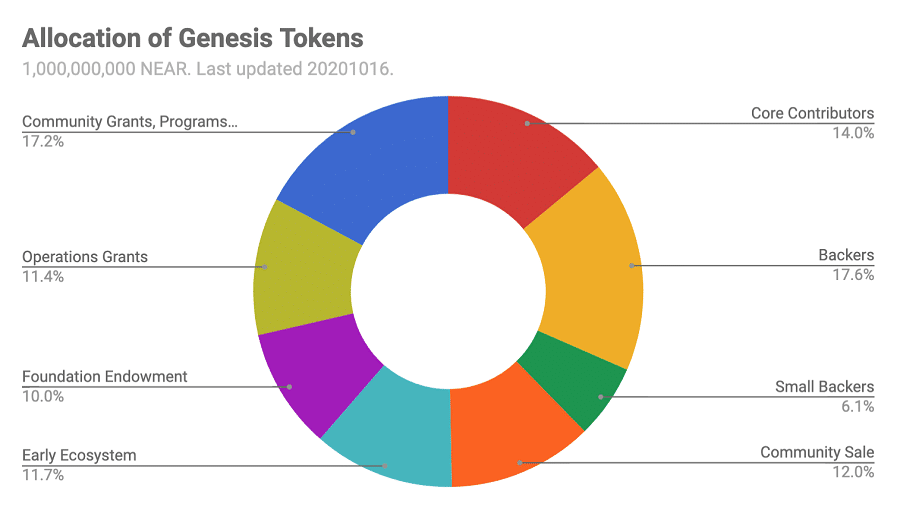
- Community grants and programs: A significant portion of tokens was allocated to grants and programs aimed at funding community initiatives, projects, and technical components developed by the community. A small provision was made for tokens that could be distributed or sold in the future. Due to the long-term nature of these endeavours, the tokens were scheduled to be released over a period of 60 months.
- Core team: Each member had an identical 4-year lockup period, with a 12-month cliff after the launch.
- Prior Backers: Near's approach ensured that no single backer held more than 3.5% of the initial supply, and few possessed more than 1%. Each previous purchaser had a lockup period ranging from 12 to 36 months from the unlocking of transfers, with the majority set at 24 months. Since the first purchase took place in 2017, some backers had to wait over 3 years between their initial purchase and any liquidity, and over 5 years to achieve full liquidity.
- Community Sale: This sale took place in August 2020 in multiple portions due to some technical difficulties and a desire to enhance participation. The total amount distributed during the sale period exceeded 120 million tokens. A maximum of 25 million of these tokens were unlocked, while the remainder were subject to 12- or 24-month linear lockups.
- Early Ecosystem: This encompassed all the grants for those who participated in the network ecosystem, including the Beta Program for building early apps, developing analytics tooling, supporting the incentivized testnet, and more. Lockups for these efforts typically ranged from 6 to 12 months, with a few being shorter or longer.
- Foundation Endowment: The NEAR Foundation initially set up network nodes but shifted focus to governance coordination, project funding, and distribution activities. It allocated an endowment, split into two parts, to support long-term operations. The first half aimed at ensuring network stability and the second supported decentralization.
- Operations Grants: The technical architecture of the system was funded by community-overseen grants. These grants were expected to be first initiated during the second half of 2020 and early 2021. The tokens set aside for this purpose were subject to long-term 60-month linear lockups to ensure they were clearly allocated to long-term projects.
- New Issuance: This was not a factor in the genesis block but could potentially represent a maximum 5% growth rate in the token supply. It's important to note that this percentage doesn't account for the burning of transaction and storage fees.
Where to Buy NEAR
You can buy NEAR tokens from any of the major centralized exchanges like Binance, Bybit and OKX. Also, head over to your article where we highlight the best crypto exchanges.
Best NEAR Wallets
Looking for a place to store NEAR?
Ledger hardware wallets offer support for NEAR via its Ledger Live service. In addition, you can store NEAR in your Safepal S1 and S1 Pro hardware wallets as well. If you're in the market for hardware wallets, check our picks for the best hardware wallets.
Guarda Wallet and Trust Wallet are among the software wallets offering support for NEAR. Also, head over to our article covering the best desktop wallets and the best mobile wallets.
NEAR's DeFi Aspirations
DeFi on NEAR is small. It doesn't break the top 10 in DefiLlama's ranking, coming in at the 23rd spot with a TVL of $228.2 million as of March 20.
Nevertheless, the protocol has a budding DeFi ecosystem ranging from DEXes to lending to liquid staking. Even with a fewer number of DApps than many of the behemoths, NEAR punches above its weight. According to DappRadar's ranking of top DApps over the last 30 days, four of the top five DApps are available on NEAR with two exclusive to the network including the top-ranked DApp.
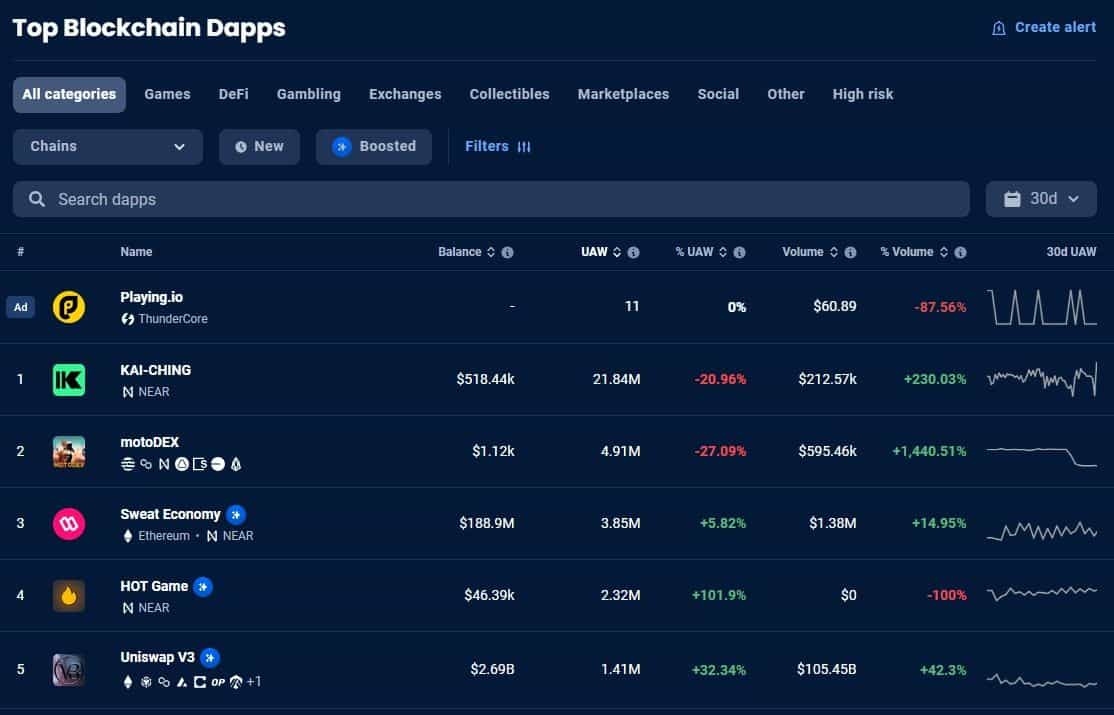
NEAR thinks it can play a significant role in shaping the future of the DeFi landscape through chain abstraction.
By leveraging zero-knowledge proofs and decentralized frontends, NEAR aims to aggregate liquidity and streamline the user experience across disparate chains NEAR Foundation's Alton Tutar said at ETHDenver. He explained how NEAR's unique account model enables users to control multiple keys for different chains within a single NEAR account, simplifying wallet management.
In addition, NEAR has forged strategic partnerships with Polygon and EigenLayer to enable fast finality layers and data availability for Ethereum rollups. These collaborations aim to unify security and liquidity across chains, fostering interoperability and scalability within the DeFi ecosystem.
Alton also introduced DapDap, an application designed to provide a unified frontend for interacting with DeFi protocols across multiple chains.
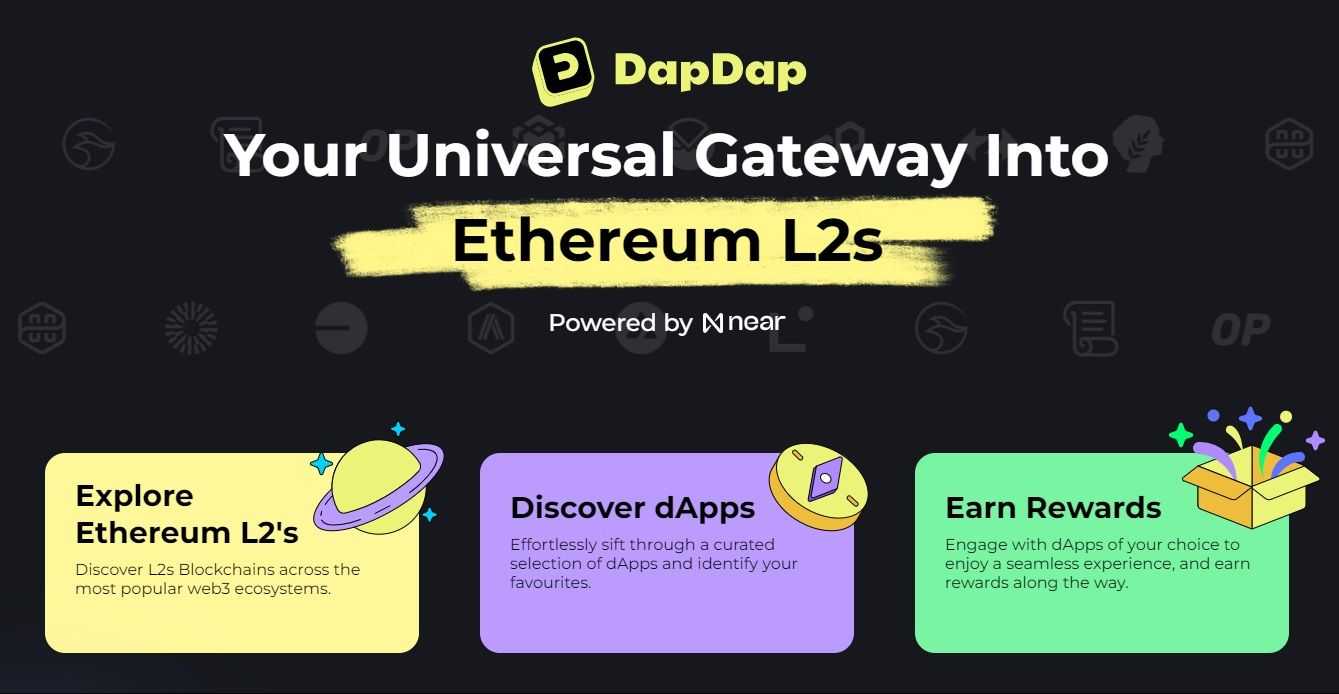
Currently, navigating the DeFi ecosystem entails using different wallets and bridging protocols, which can be cumbersome and inefficient for users. Each blockchain platform and Layer 2 solution typically requires its own set of tools and interfaces, making it challenging for users to seamlessly access different DeFi protocols.
DapDap seeks to streamline this process by offering a single interface where users can access a wide range of DApps from various chains.
By consolidating access to decentralized applications into one platform, DapDap simplifies the user experience and reduces friction in interacting with DeFi protocols. Users no longer need to switch between different wallets or learn new protocols for bridging assets between chains. Instead, they can access all the functionalities they need — from lending and borrowing to staking and swapping — in one place.
Looking ahead, NEAR envisions a future where cross-chain lending and borrowing, decentralized swaps, and AI-powered bots seamlessly operate across multiple chains. By abstracting the complexities of blockchain technology, NEAR says it aims to democratize access to DeFi and accelerate the industry's growth.
NEAR in 2024
In 2024, the NEAR Protocol team is focused on several key projects aimed at enhancing the usability, scalability, and decentralization of the platform.
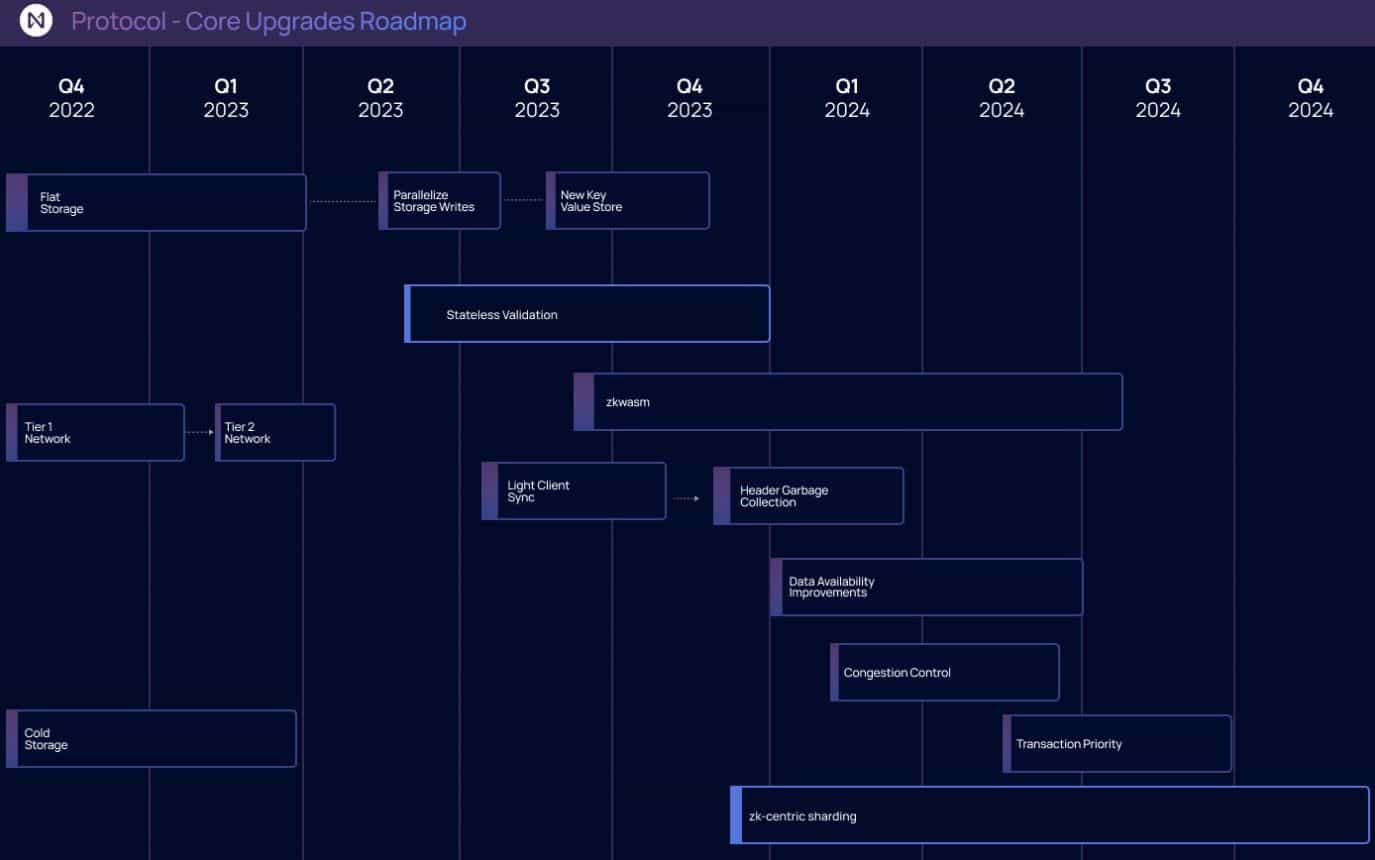
- Stateless Validation: In development for several months, this project adapts the original Nightshade sharding design to improve shard performance by storing state in memory, eliminating the need for fraud proofs. Scheduled for delivery in Q2 2024, stateless validation is expected to significantly increase shard throughput, setting the stage for NEAR's continued growth.
- Congestion Control and Transaction Priority: Despite NEAR's horizontal scalability, ensuring a smooth user experience during network congestion is crucial. This involves localizing congestion to prevent network-wide disruptions and allowing users to prioritize transactions based on willingness to pay higher fees.
- Support for Account Aggregation: Support for account aggregation is also underway, enabling users to manage accounts on different chains with a single NEAR account. This aligns with NEAR's vision for chain abstraction and requires chain signatures using multi-party computation (MPC) to sign payloads.
- zkWASM Collaboration: Collaboration with the Polygon team continues on zkWASM, a project to build a prover for WebAssembly smart contracts. This initiative aims to provide an alternative execution environment to EVM for Layer 2 solutions and could be used to prove state transitions in NEAR through zero-knowledge proofs.
- Data Availability Improvements: Improvements to data availability are also on the agenda, including the introduction of KZG commitment to prevent data availability fraud proofs and real-time bridging to verify data availability on Ethereum.
- Ethereum Wallet Support: Efforts are underway to support Ethereum wallets like MetaMask natively on NEAR. This entails protocol changes to support Ethereum addresses and process RLP serialized Ethereum transactions, aligning NEAR more closely with the Ethereum ecosystem and attracting more users.
- Research into the Future of Sharding: Research into the future of sharding is ongoing, exploring two major directions: synchronous sharding and ZK-centric sharding. Synchronous sharding aims to enable synchronous execution of smart contracts to improve developer experience, while ZK-centric sharding leverages zero-knowledge proofs to validate state transitions across shards, enhancing scalability and decentralization. Additionally, research is being conducted on dynamically adjusting the number of shards based on network usage, marking the final phase of sharding development.
NEAR Protocol Review: Closing Thoughts
NEAR Protocol aims to simplify blockchain interaction for users and developers, envisioning a future where blockchain technology is as intuitive as using everyday technology.
Through its innovative approach to chain abstraction, NEAR seeks to remove the barriers that have hindered blockchain's mainstream adoption, making it more accessible and user-friendly. NEAR's user-centric features, such as human-readable accounts and FastAuth, streamline the onboarding process and improve security.
NEAR's aspirations in the DeFi space, highlighted by partnerships and projects like DapDap, aim to unify the fragmented landscape of decentralized finance. By facilitating cross-chain interactions and simplifying access to DeFi protocols, NEAR aims to be a major player in the future of finance, where barriers between different blockchain networks are diminished.
Looking ahead, NEAR's 2024 roadmap includes advancements like stateless validation, improved congestion control, and enhanced Ethereum wallet support These efforts are geared towards making NEAR a key player in driving blockchain's mainstream adoption by making it more user-friendly and efficient.
NEAR Protocol is at the forefront of making blockchain technology accessible and intuitive, with a clear vision and concrete steps towards achieving a seamless blockchain experience for all.
Frequently Asked Questions
NEAR Protocol is a decentralized development platform designed to make blockchain technology more accessible and user-friendly for both developers and users. It focuses on simplifying interactions with blockchain through innovations like chain abstraction and sharding.
NEAR Protocol enables chain abstraction through several key strategies:
- Sharding: Implements Nightshade sharding to process transactions in parallel, enhancing scalability and making the blockchain's complexity transparent to users.
- Human-Readable Account Names: Uses easy-to-remember account names instead of complex addresses, simplifying transactions and interactions on the blockchain.
- Access Keys with Permissions: Offers a nuanced access system, allowing users to grant specific permissions to DApps, improving security and usability.
- Cross-Chain Interoperability: Facilitates seamless interactions across different blockchains with features like account aggregation and chain signatures, abstracting the complexities of multi-chain operations.
- Developer Tools: Provides comprehensive SDKs and tools that abstract blockchain development intricacies, enabling the creation of user-friendly applications.
- Dynamic Resharding (Planned): Aims to introduce dynamic resharding to automatically adjust the number of shards based on demand, ensuring scalable and efficient network performance.
NEAR's 2024 roadmap includes advancements such as stateless validation, improved congestion control, enhanced support for Ethereum wallets, and ongoing research into the future of sharding, indicating a strong focus on innovation and usability.
NEAR Protocol plans to help with the mainstream adoption of blockchain by continuously improving the platform's scalability, user experience, and interoperability, making blockchain technology accessible and intuitive for a broader audience.
NEAR Protocol's efforts in chain abstraction face several key challenges:
- Technical Complexity: Integrating diverse blockchain systems under a unified abstraction layer is technically challenging, requiring seamless interoperability and security across platforms.
- Integration Difficulty: Developers may find it challenging to adapt their applications to work with NEAR's abstraction layer, necessitating additional learning and development efforts.
- User Education: Educating users on the benefits and functionality of chain abstraction is crucial for adoption, requiring clear communication and outreach.
- Security Concerns: Adding an abstraction layer introduces potential vulnerabilities, making the security of cross-chain transactions a significant concern.
- Competition and Fragmentation: The blockchain space is competitive and fragmented, with many projects pursuing similar goals, making it challenging for NEAR to stand out.
- Performance and Scalability: Ensuring that the abstraction layer does not introduce performance bottlenecks or scalability issues is essential for maintaining an efficient network.
Disclaimer: These are the writer’s opinions and should not be considered investment advice. Readers should do their own research.


